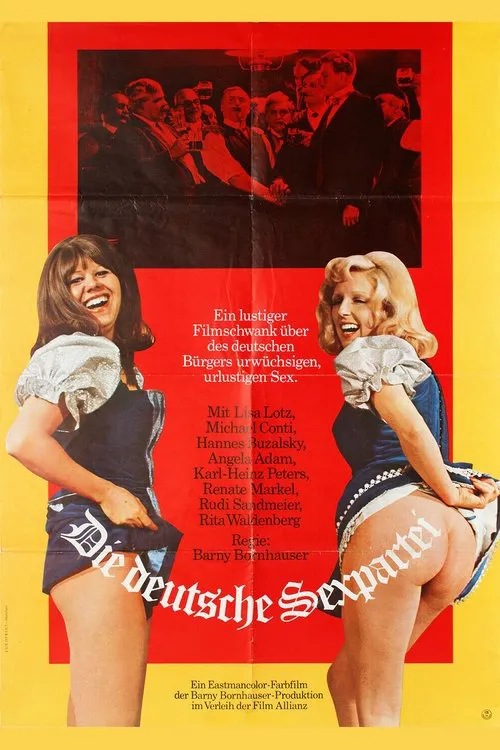Unpacking the Uproar: The Genesis of German Sex Politics on Screen
In the nascent era of the 1970s, as West Germany navigated the tumultuous currents of social change and cultural liberation, a film emerged from the vibrant yet often controversial New German Cinema movement, daring to lampoon the very institutions it sought to question. Hurra… die deutsche Sex-Partei (Hurrah… the German Sex Party), unleashed in 1970 under the direction of the prolific Sigi Rothemund, was far more than just a typical sex comedy. It was a audacious cinematic endeavor that encapsulated the growing tensions between conservative post-war morality and the burgeoning desires for personal freedom and sexual expression.
At its core, the film wasn’t merely aiming for cheap laughs or titillation; it sought to hold a satirical mirror up to society. Rothemund, seizing the zeitgeist, envisioned a narrative that would push boundaries by presenting a purely fictional political entity – the “German Sex Party.” This brainchild, led by the captivating and fiercely independent red-haired Anna, was designed as a vehicle to dismantle the rigid moral edifices of contemporary German society. Through a lens of farce and overt provocation, the film explored the contentious debates surrounding issues such as the decriminalization of nudity and prostitution, advocating for radically liberal views on sex and relationships at a time when such discussions were largely taboo. The film’s creation sprang from a desire to tap into a very real cultural shift, transforming it into a bold, often outrageous, cinematic spectacle.
The Art of Provocation: Sigi Rothemund’s Vision
Sigi Rothemund, a director known for his versatility and often forays into exploitation and genre cinema, brought a distinct verve to Hurra… die deutsche Sex-Partei. Rather than simply relying on its provocative subject matter, Rothemund engineered a specific visual and narrative style that amplified its satirical bite. The film is characterized by bold colors, vibrant sets, and a dynamic comedic rhythm, elements that ensured the absurdity of the plot resonated forcefully with the audience. This wasn’t merely a backdrop; it was an active participant in illustrating the party’s confrontational, often theatrical, approach to politics.
Rothemund expertly blurred the lines between political activism and public entertainment, a commentary that arguably predated many real-world political spectacles. He understood that controversy could be a potent tool, and his direction ensured that the protagonist, Anna, with her fiery charisma and media magnetism, became the very embodiment of this strategy. Through demonstrations that were intentionally designed to shock and provoke, the film highlighted how the media could be manipulated to propel a cause into the public consciousness, for better or for worse. The image below perfectly captures the film’s vibrant and slightly surreal aesthetic, hinting at the brazen attitude the German Sex Party embodied.

Beyond the Laughter: A Mirror to Society’s Morals
While wrapped in the guise of a lighthearted comedy, Hurra… die deutsche Sex-Partei offered a surprisingly trenchant critique of political maneuvering and societal hypocrisy. Its modus operandi was disarmingly simple: take a controversial idea and extrapolate it to its most absurd logical conclusion within a political framework. The film’s success lay not just in its ability to entertain, but in its capacity to spark genuine dialogue—and undoubtedly, some outrage—among its viewers.
The “German Sex Party” and its antics, from advocating for public nudity to challenging deeply ingrained moral codes, served as a clever device to expose differing viewpoints within society. It depicted the outrage from conservative factions as equally exaggerated as the party’s own demonstrations, creating a feedback loop of escalating absurdity. Ultimately, Rothemund’s film, through its audacious narrative, invited audiences to question their own understanding of freedom, morality, and the very concept of “political correctness” long before the term became ubiquitous. It remains a fascinating snapshot of a pivotal moment in West German cultural history, reflecting a society grappling with its identity as it moved away from conservative post-war strictures towards a more liberated, albeit contentious, future.